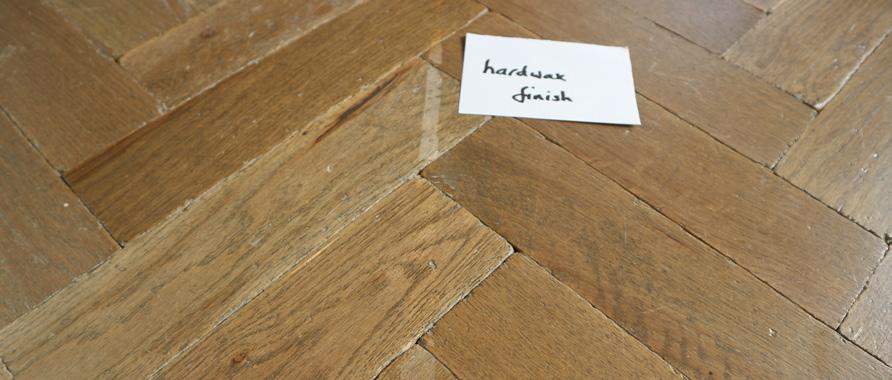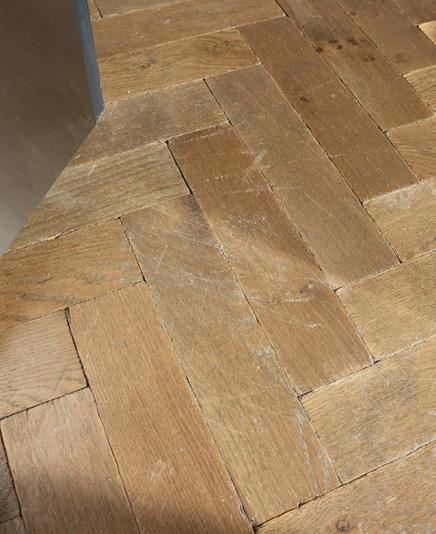
3 minute read
INSTALLER ADVICE
SAVE MONEY! LEARN FROM OTHER INSTALLERS MISTAKES
Richard Renouf, Furniture & Floorcoverings Consultant
Advertisement



The kitchen wasn’t the problem, but it had caused it – or rather, the installer had whilst he was putting the units in position.
He’d arrived at the customer’s home to find a parquet floor had been installed throughout the ground floor – the hall, lounge, dining room and kitchen. The smell of the oil finish was still lingering in the air, so the flooring was brand new.
He couldn’t risk damaging the parquet to he covered as much of it as he could with corrugated cardboard and taped it in place so it wouldn’t move while he was working. Then he used dust sheets to add further protection.
The fridge and freezer were both full height but he managed to part-walk and part-shuffle them into place. The rest of the units were easy enough for a oneman job and by the end of the week the job was done and it was time to clear up and clear off.
He loaded up his tools before gathering up the dust sheets. To his horror there were marks on the flooring. Some dents and scratches from the units and appliances which showed white against the medium oak finish of the flooring. Worse still, when he peeled back the masking tape it left light coloured marks everywhere it had been in contact with the flooring. It looked terrible. He didn’t wait for the customer to discover it, he told her straight away. He’d get it fixed. He had a friend who ‘did floors’ and he was sure it could all be sanded out.
Three days later he met his friend at the house. The sander was set up, started, and turned off within seconds. The sander created more scratches and made things look a whole lot worse. ‘It’s the flooring, it must be faulty.’ His friend said and walked off the job.
‘What happens now?’ asked the customer.
‘I don’t know, I’ll have to see what I can find out and get back to you.’ But his enquiries just let to an impasse with the floor layers denying any issue with the flooring and the installer quoting his friend’s comments that it was faulty.
It was the customer who called me when she became angry at the installer’s lack of action. I went to inspect the job and the installer was invited along, but didn’t turn up. In my experience corrugated cardboard doesn’t offer much protection from ‘point loading’ – if all the weight of a unit is balanced on one foot when it get tipped up the force will crush the cardboard. It happens on worktops, too. The marks and scratches were really obvious, but the masking tape stripes were even more pronounced.
Fortunately the sanding had been stopped so quickly, the marks from this were no worse than the damage it was intended to repair.
With the cost of the flooring running into thousands of pounds, the cost of some plywood sheeting would have been worthwhile. And it could be kept in the van for the next job, and for a good number of jobs after that. It would take a considerable amount of negligence for an installer to mark a floor through a 4 or 6 mm overlay. But that’s hindsight.
Stopping the sanding immediately was the most sensible thing the fitter and his friend did, but this also was only discovered in hindsight. All the flooring needed was another coat or two of oil and the marks would be gone – I tested this using the dregs that had been left with the customer. The flooring had a distressed finish anyway, so the addition of a few more indentations was pretty inconspicuous, and something the customer was happy to accept a little compensation for. The alternative would have been to rip out the entire flooring and replace it. It’s a shame the installer wasn’t to see the results, it would have been good to see smiles all round after an inspection for once.
We are responsible for the consequences of our work, so damage like this cannot be ignored. The installer was fortunate that the customer took the initiative and a reasonable solution was found as a result. But I’ve always believed there’s a better way to learn than from your mistakes: learn from other people’s mistakes, it’s much cheaper!
www.richard-renouf.com










